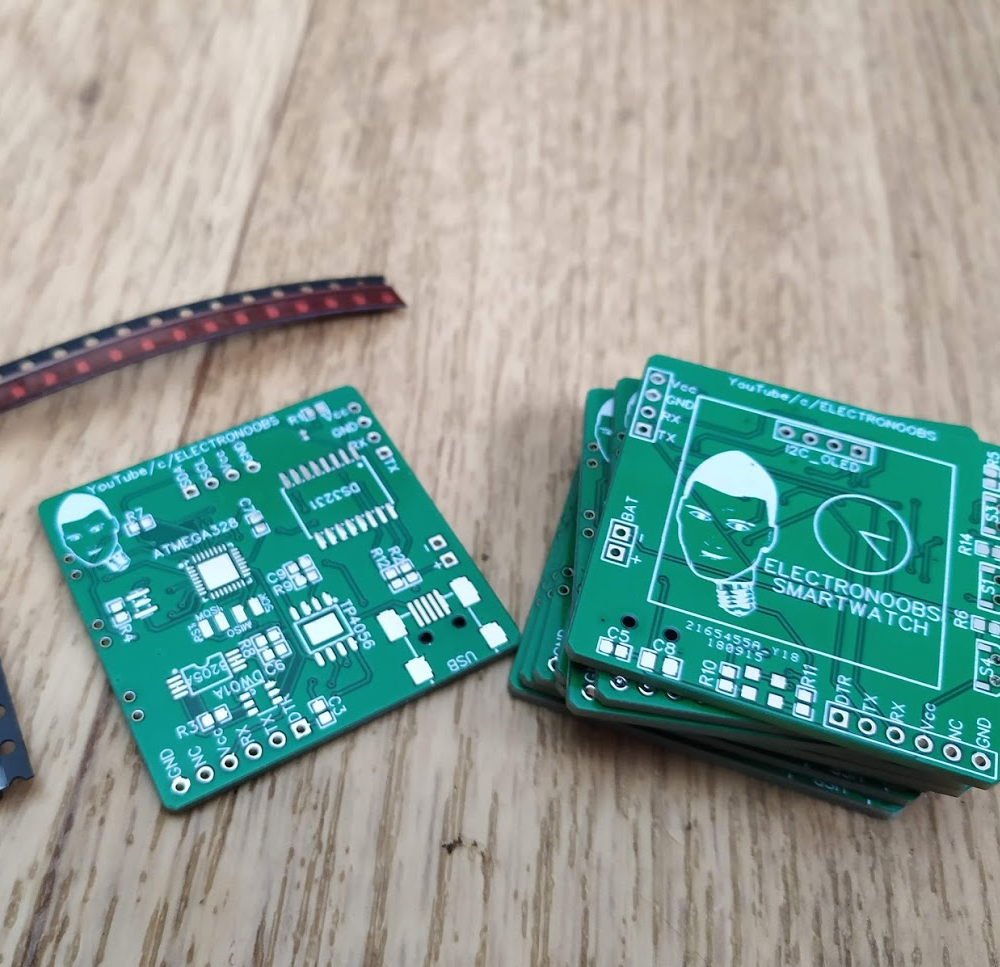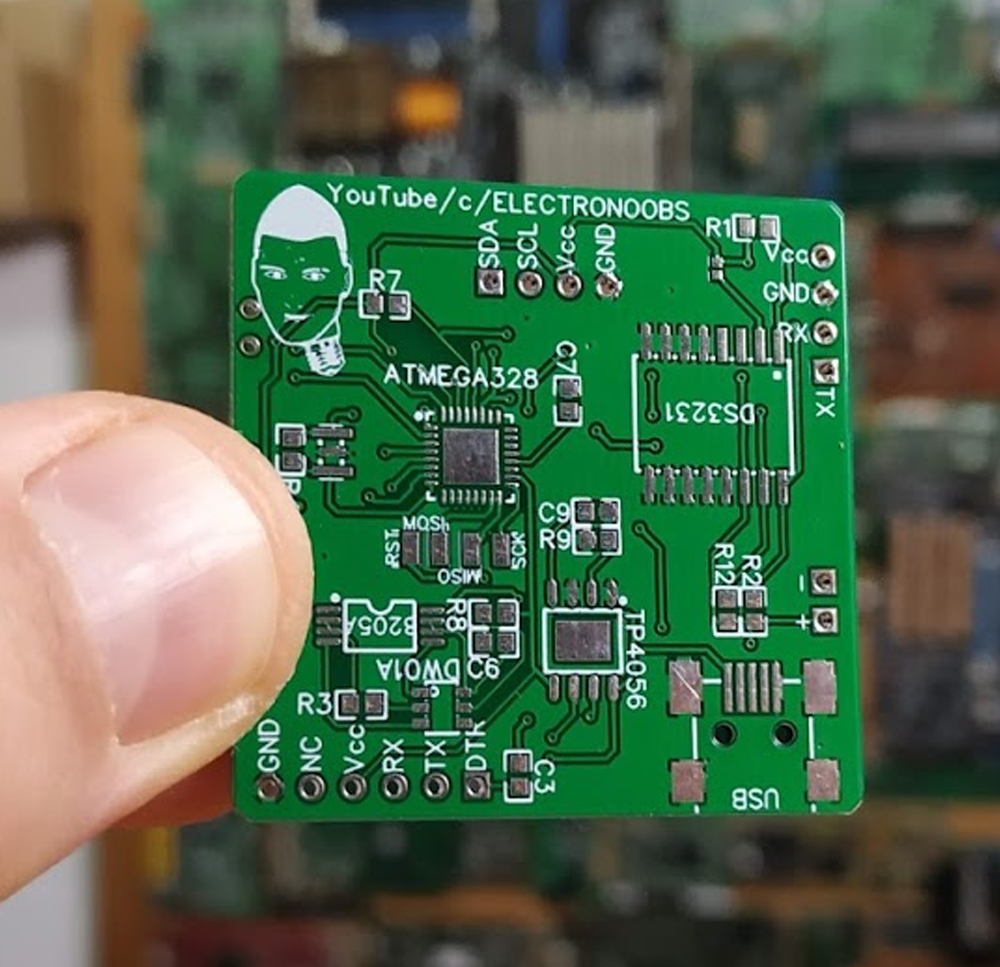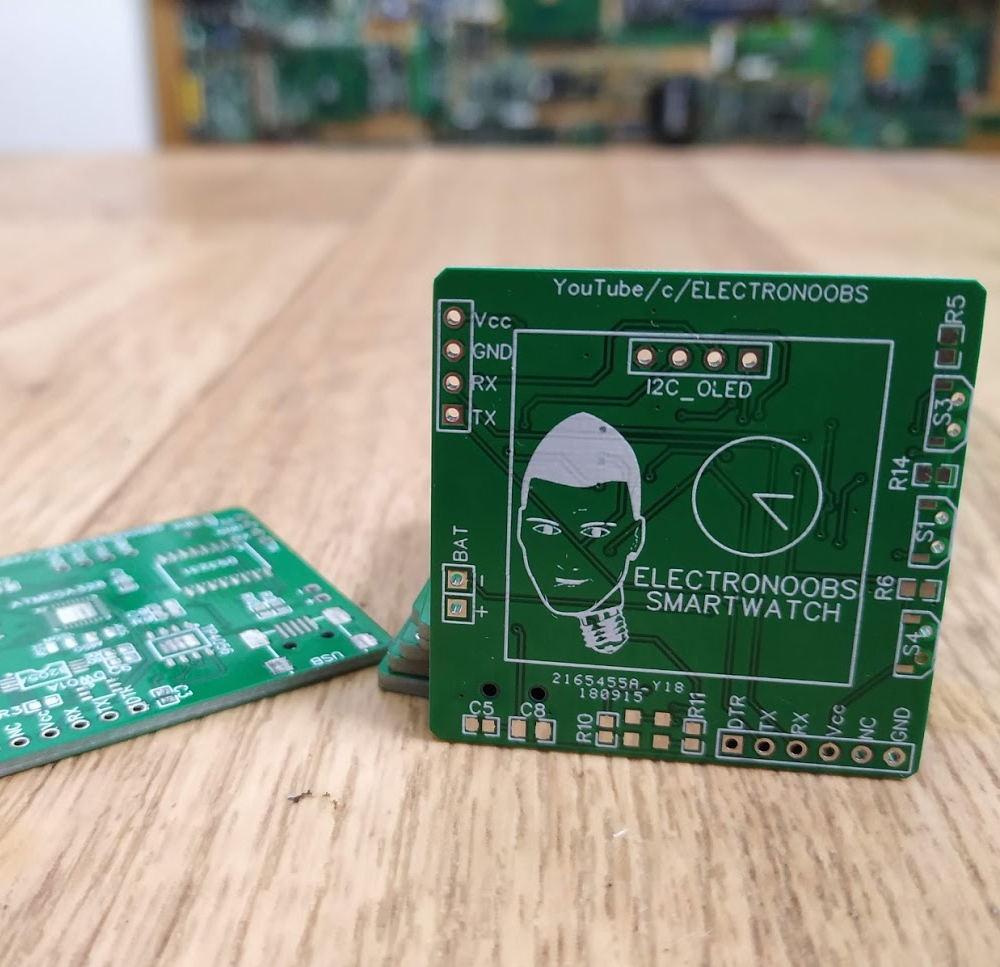We can also see the DS3231 chip, which is the real time chip. Using i2c connection, we could get the real time from this chip. On the front part of the board, on top,we have 4 pins for the i2c connection of an OLED screen, since that is what I'll use to show stuff. On the side we have 3 push buttons in a 90º format. On the left side we can see the pins for the UART connection of the Bluetooth module and on the bottom we have the pins we will use to program the baord using an FTDI mdoule.
That's it. Stay tuned for the full tutorial on
my YouTube channel. I really hope you will like this first version, since I'm sure I'll have more version than just this one. Keep up.




